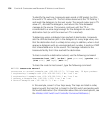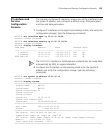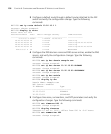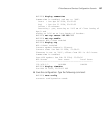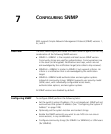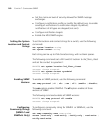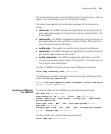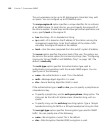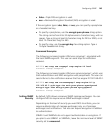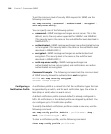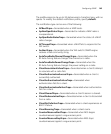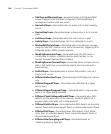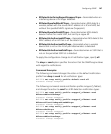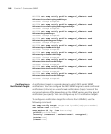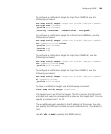142 CHAPTER 7: CONFIGURING SNMP
The usm-username can be up to 32 alphanumeric characters long, with
no spaces. You can configure up to 20 SNMPv3 users.
The snmp-engine-id option specifies a unique identifier for an instance
of an SNMP engine. To send informs, you must specify the engine ID of
the inform receiver. To send traps and to allow get and set operations and
so on, specify local as the engine ID.
hex hex-string—ID is a hexadecimal string.
ip ip-addr—ID is based on the IP address of the station running the
management application. Enter the IP address of the station. MSS
calculates the engine ID based on the address.
local—Uses the value computed from the switch’s system IP address.
The access option specifies the access level of the user. The options are
the same as the access options for community strings. (See “Configuring
Community Strings (SNMPv1 and SNMPv2c Only)” on page 140.) The
default is read-only.
The auth-type option specifies the authentication type used to
authenticate communications with the remote SNMP engine. You can
specify one of the following:
none—No authentication is used. This is the default.
md5—Message-digest algorithm 5 is used.
sha—Secure Hashing Algorithm (SHA) is used.
If the authentication type is md5 or sha, you can specify a passphrase or
a hexadecimal key.
To specify a passphrase, use the auth-pass-phrase string option. The
string can be from 8 to 32 alphanumeric characters long, with no
spaces.
To specify a key, use the auth-key hex-string option. Type a 16-byte
hexadecimal string for MD5 or a 20-byte hexadecimal string for SHA.
The encrypt-type option specifies the encryption type used for SNMP
traffic. You can specify one of the following:
none—No encryption is used. This is the default.
des—Data Encryption Standard (DES) encryption is used.



